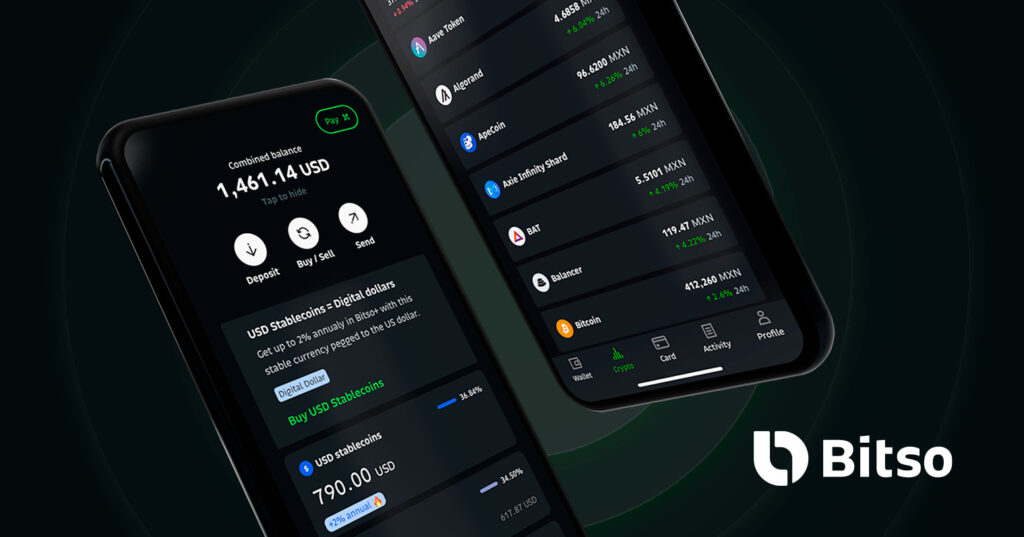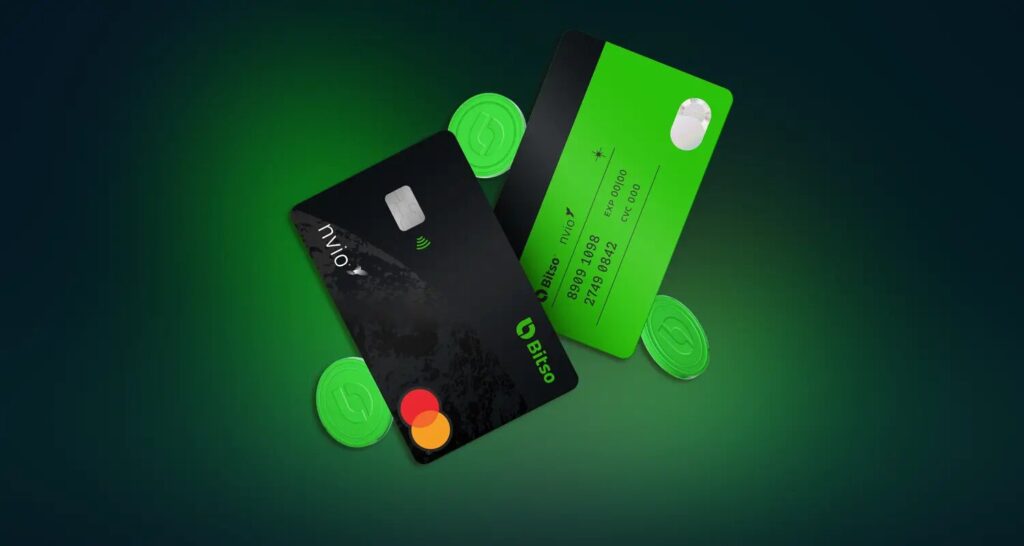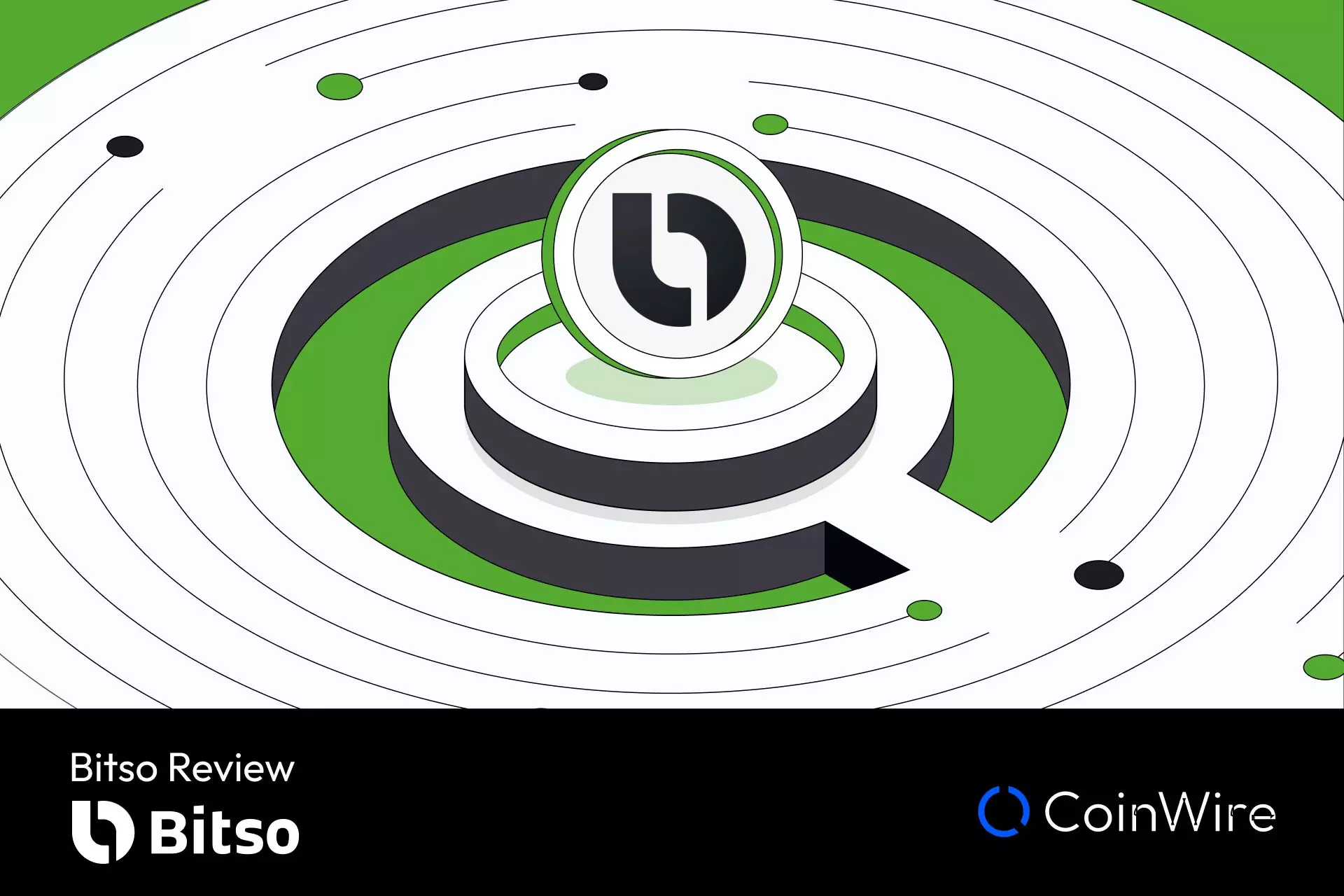Bitso Exchange provides a way to protect your money from the volatility and other limitations of traditional banking systems. In this Bitso review, we’ll explore the wallet’s key features: spot trading, margin trading with leverage, crypto-crypto pairs, and crypto-fiat pairs.
To ensure you have all the information you need, we’ll also examine its security features, supported cryptocurrencies, ease of use, and how to successfully buy, trade, and manage your digital assets using the Bitso wallet. Read on!
Key Takeaways:
- Founded in 2014, Bitso is the first cryptocurrency wallet in the Latin American market to offer trading against Mexican pesos.
- The platform does not offer any investment or referral rewards, so if you want to earn active or passive income while trading, consider alternative crypto wallets.
- The company launched a web3 wallet in May 2024 to cater to users who want to collect NFTs or interact with various decentralized applications (dApps) within the Bitso app.
Bitso Review: What is it?
Bitso is the first and safest crypto exchange to offer trading against the Mexican pesos. In 2014, Bitso launched to provide traders in Latin America with a dedicated and seamless trading experience with lower fees. In keeping with this, Bitso allows traders to deposit fiat currencies directly from their banks and exchange them for other cryptocurrencies.
Bitso currently supports 57 cryptocurrencies, including Ethereum, Bitcoin, XRP, Polkadot, and Dogecoin. Users have access to Bitso Alpha, a platform that equips traders with real-time price charts, order books, and trade history to help them make informed trading decisions.

In addition to the crypto wallet, Bitso launched a Web3 digital wallet in May 2024 that supports multiple blockchain networks and allows users to explore the decentralized web. Upon the Bitso web3 wallet launch, five major blockchain networks were available to users: Optimism, Ethereum, Base, Polygon, and Arbitrum.
At a glance, the Bitso Exchange is shown below.
| Feature | Description |
| Overview | The crypto company enables traders from Latin America to invest, purchase, sleep, swap, trade tokens, and explore Web3 applications. |
| Key Features | Mobile app, Spot trading, Margin trading |
| Deposit Methods | Bank and Card. |
| Minimum Deposit | $100 |
| Opportunities for Earning | There are no options for generating both active and passive income. However, Bitso+ allows users to earn yields by holding USDT, ETH, and BTC. |
| Spot Trading | Bitso spot trading interface supports all 55+ supported cryptocurrencies. |
| Margin Trading | Bitso offers margin trading with a maximum leverage of 25x on synthetic assets. |
| User Experience | Easy to use. |
| Fiat Funds | The US dollar, Mexican peso, Argentine peso, and Brazilian real represent fiat funds on Bitso. |
| Languages | Spanish, Portuguese, and English. |
| Accessibility Restrictions | Bitso offers services in Argentina, Brazil, Colombia, and Mexico. |
| Device Compatibility | Mobile app and web browser. |
Pros of the Bitso Crypto Exchange
- Supports fiat deposit
- Low fees.
- Supports more than 50 cryptocurrencies and 97 markets.
- Large trading volumes.
- Multiple payment methods.
- Simple and convenient mobile app.
- Supports crypto-crypto and crypto-fiat pairs.
- Regulated by the Gibraltar Financial Services Commission (GFSC).
Cons of the Bitso Crypto Exchange
- Limited choices of cryptocurrencies.
- The entry threshold is relatively high, requiring a minimum deposit of $100.
- Geographical availability is limited.
- No referral programs.
Bitso Fees
Generally, you would be required to pay a 1% fee if your trades meet Bitso’s minimum trading volume. However, within a 30-day window, users can enjoy discounts on trading fees based on their trading volume. Let’s look deeper into Bitso trading fees, withdrawal fees, and deposit methods.
Bitso Trading Fees
Unlike other crypto exchanges, Bitso’s fees for trading depend on the market and trading volume. The commissions for the maker and taker are different, and Bitso calculates the commission size based on the traders’ 30-day trading volume, with lower volumes having higher fees and vice versa.
On the other hand, Bitso calculates the trading level daily and readjusts commissions accordingly. Each market on Bitso has different trading fees, but here are the average fees for Bitcoin pairs and Ethereum pairs:
Bitso Fees – BTC/MXN
| Fee | 30 Days Trading Volume |
| 1.00 | 0 – 1 |
| 0.95 | 1 – 2.5 |
| 0.90 | 2.5 – 4 |
| 0.85 | 4 – 6.5 |
| 0.80 | 6.5 – 9 |
| 0.75 | 9 – 12 |
| 0.70 | 12 – 18 |
| 0.65 | 18 – 25 |
| 0.60 | 25 – 32 |
| 0.55 | 32 – 40 |
Bitso Fees – ETH/MXN
| Fee | 30 Days Trading Volume |
| 1.00 | 0 – 50 |
| 0.95 | 50 – 125 |
| 0.90 | 125 – 200 |
| 0.85 | 200 – 325 |
| 0.80 | 325 – 450 |
| 0.75 | 450 – 600 |
| 0.70 | 600 – 900 |
| 0.65 | 900 – 1250 |
| 0.60 | 1250 – 1600 |
| 0.55 | 1600 – 2000 |
Bitso Withdrawal Fees
The following withdrawal methods are available on Bitso:
- Bitcoin
- International Bank Wire
- Ethereum.
- Ripple Gateway
- The Interbank Electronic Payment System (SPEI)
With Mexican pesos, SPEI, and the Ripple Gateway, you can request withdrawals for free. However, if you are withdrawing through Bitcoin or Ethereum, the fees are 0.001 BTC and 0.003 ETH, respectively.
Bitso Deposit Methods
Bitso does not charge any fees on deposits, and these are the deposit methods Bitso supports:
- International Bank Wire
- Ripple Gateway
- SPEI Network
Now, here’s a guide on how to fund your Bitso wallet:
- Step 1: Open a Bitso Account
Download the Bitso app and register by entering your email address and creating a password. Accept the terms and conditions, and click on “Sign Up“. Then proceed to complete your profile—provide your full name, date of birth, and location. Finally, upload a valid form of identification to verify your identity.

- Step 2: Deposit Funds
Once your account is up, click on “deposit” and transfer money from your local bank or card to your Bitso account. You need a minimum entry threshold of $100.

Besides fiat currencies, you can also transfer crypto from other wallets to your Bitso account. To do this, select crypto, find the network that Bitso uses to receive the token you want, and use the same network to send your funds. Currently, Bitso supports Polygon, Ethereum, Arbitrum, and Optimism networks.

- Step 3: Start Trading
After funding your account, you can use the deposit you made to start buying and selling cryptocurrencies.
How to Register for an Account at Bitso
Download the Bitso app on the Play Store or Apple Store, or install the web extension on your computer.
Step 1: Select the “Start now” button.
Step 2: Begin registration by providing your personal information (country of residence, email, and desired password). Ensure that you add all the information accurately.
Step 3: Once you set your password, follow the prompts. Read through the Terms and Conditions, Crypto Risk Disclaimer, and privacy policy. If you agree with the terms and want to continue, click “accept” and then “start.”
Step 4: Bitso will send a six-digit code to your email, copy and paste the code, and then verify your email. Once you confirm, you are in.
Step 5 (Verification): Bitso follows Know Your Customer (KYC) protocols, so click on “complete information” to proceed. You must provide a valid ID, passport, or other government-issued document as proof of identity. Once Bitso confirms your KYC approval, your account is ready, and you can start investing and trading.
Bitso Supported Countries
Bitso is a Mexican crypto exchange; however, its audience is not only Mexican residents. Bitso provides customer support in the following countries:
- Mexico
- Brazil
- Colombia
- Argentina
- United States
Despite having a Gibraltar license and regulation that enables it to serve customers worldwide, Bitso Exchange primarily concentrates on Latin American markets.
Bitso’s Features
Bitso Exchange offers a mobile app, a web wallet, and a Bitso card to suit various users’ needs. Here is a detailed overview of each of these offerings for better understanding.
Bitso Wallet
Bitso Wallet has an intuitive interface that balances the needs of beginner and advanced traders alike. Using the wallet, you can view your balance, access transaction history, get notifications, and explore other trading interfaces.
Also, spot trading, leverage for margin trading, futures trading, and exchanging fiat currencies for crypto are possible on the wallet. The wallet offers free deposits, charges $10 for bank transfers of USDT stablecoins, and charges $0.96 for withdrawals of USDT stablecoin in the form of ERC-20 tokens.
Bitso Mobile App

Bitso’s mobile app enables users to trade with their smartphones and manage tokens on the go. The mobile wallet offers the same features as the web wallet, letting you receive crypto and manage tokens anywhere and anytime.
The Bitso mobile app is simple and efficient, with standard charts, indicators, and convenient take-profit and stop-loss functions. However, as is customary with other crypto exchanges, users have complained about the lack of training (Demo) accounts or helpful training materials.
So, if you’re completely new to crypto, explore other apps with robust educational resources and familiarize yourself with the ins and outs of the crypto industry before switching to the Bitso wallet.
Bitso Card

Bitso cards are digital and physical cards that function like traditional debit cards. You can use them to withdraw cash from automated teller machines (ATMs) and make payments online, as well as in physical stores in Mexico and other parts of the world.
Anyone with a Bitso account is eligible to own a card, and users can fund it with the available balance in MXN. The Bitso card uses all Bitso security protocols to safeguard users’ funds. You can block, unblock, or reissue your card through the app at any time.
Security: Is Bitso Safe?
Yes, the Bitso exchange is safe. Bitso supports fiat currencies, so they require verification to comply with KYC protocols and anti-money laundering (AML) legislation. For this, they developed a three-level verification, each with its own benefits and daily limits. Aside from these verification levels, Bitso wallets use two-factor authentication (2FA) and multi-signature (multi-signature) wallets to increase security further.
Conclusion
Bitso’s goal is to expand user access to the Web3 sector and increase blockchain app adoption. While there have been complaints of long deposit waiting times, Bitso is still a safe and efficient wallet for trading cryptocurrencies.
It is also a plus for the Latin American crypto market as it provides access to various cryptos, blockchain networks, and decentralized applications, all while charging low fees on transactions. If you’re considering using Bitso Exchange to invest and trade cryptocurrency, do your research to ensure it suits you.





